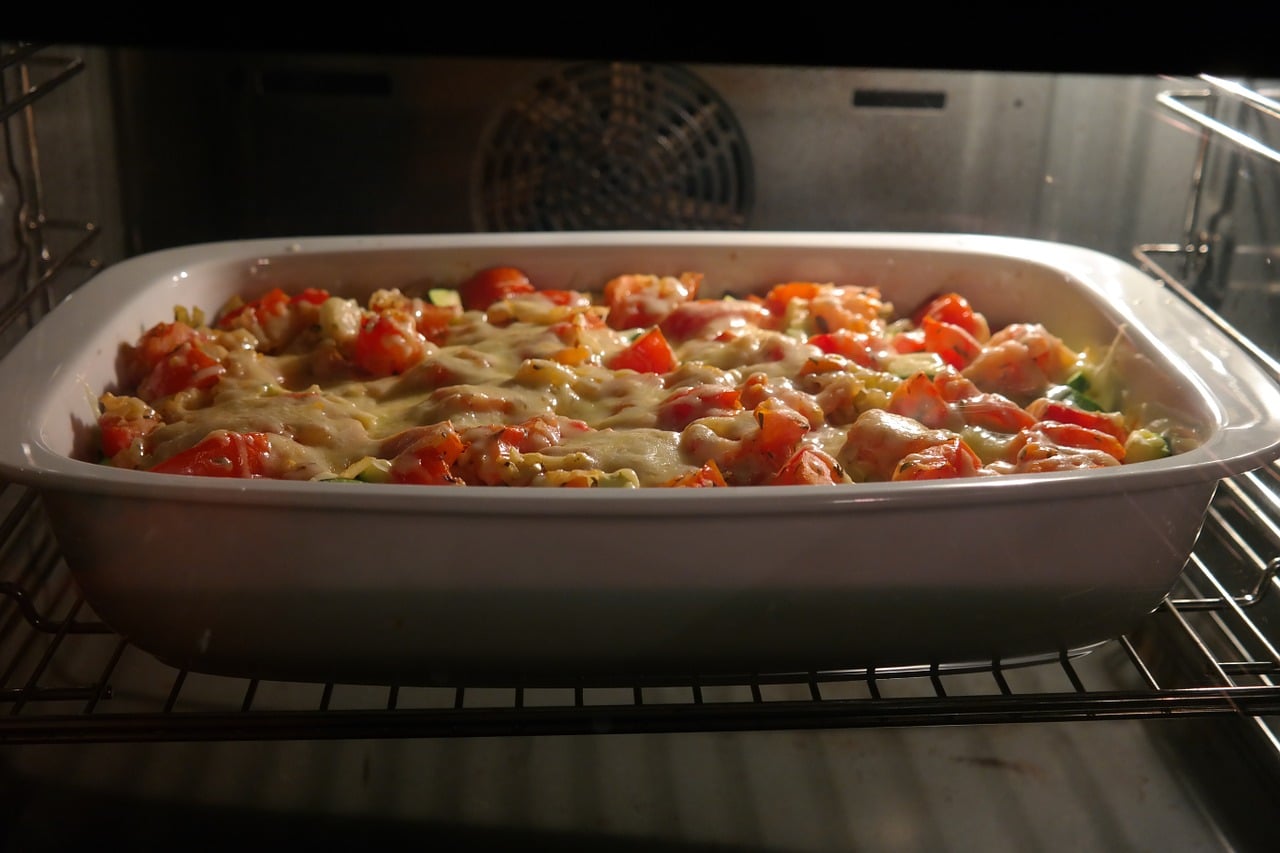A casserole dish is an essential piece of equipment in the kitchen. Unlike store-bought aluminum trays and sheets, casserole dishes could help you cook amazing food, and you can place them directly on the dining table after cooking.
Casserole dishes are manufactured with various materials like ceramics, glass, stoneware, silicon, and metals—with prices ranging from cheap to pricey.
Identifying the material is an easy process of eliminating which items should be used in the oven. While some plastics are microwave and dishwasher safe, there is still a high melting chance due to intense heat. Wood, on the other hand, will likely twist and burn inside the oven.
Knowing your casserole dish’s capacities will give a helpful insight into the cleaning method. Most especially, the dish’s capability to be placed inside a microwave, an oven, or a broiler. The oven-safe dish could reduce the need to replace your prepping dish and place it straight into the oven. It could also endure high temperatures without any chances of breaking, shattering, and exploding.
How Do You Know If a Dish is Oven Safe?
The two most used materials in creating casseroles are ceramic and glass, which have varying conditions and usage. One quick way to identify whether the casserole dish is oven-safe or not is through visual inspection. Besides looking at the packaging from where the dish is placed, most manufacturers stamp their casserole dishes (with fade-proof ink or with a hot stamp) to indicate its disclaimer.
Before placing your dish inside your oven, lift and check if the words “oven-safe” are indicated below. If there’s none, do not use your casserole dish for the oven. Ceramic and glass casseroles use different materials and specialized coating to prevent unwanted damages. These materials tend to expand once in contact with high temperatures. If you accidentally place a casserole dish that is not oven-proof, it can cause thermal shock once removed from the heat source, which may lead to cracking.
Thermal shock is the change of state of the glass or ceramic after introducing high temperature. Crazing or the cracking of the material’s coating occurs. If removed before it is completely cracked, the gaps left on the grazed casserole dish will produce dirt and bacteria buildup. This will make the casserole unsafe for food consumption and must be disposed of or reuse as a pot, display tray, and item sorter.
If dunting, or if cracks that could rescind the structural integrity of the ceramic dish occurs, this will completely shatter your casserole. Dunting may occur while and after the casserole dish is removed from the heat source (oven, microwave, broiler). Still, shattered glass is an unpleasant and dangerous mess to clean up.
Are All Ceramic Casserole Dishes Oven Safe?
Not all casserole dishes are oven-safe. Ceramic casserole dishes, known for their various designs and colors, are also prone to dunting and shattering. Inspect whether the casserole dish has an indicated disclaimer underneath. If there is none, it has a high probability that it is not oven-proof.
Ceramic casseroles with painted decorations and with metallic trim are not suitable for baking. These types of casseroles are only limited to serving dishes, storing leftovers, and home decor.
In a general sense, ceramics (with or without enamel coating) could endure heat up to at least 225° Celsius. Higher than the indicated temperature may result in a ceramic explosion. Also, ceramic dishes are not suitable for freezer-to-oven setup. It can be damaged easily once placed on a sudden temperature change.
For reheating, the ceramic casserole dish must be thawed at room temperature before placing in the oven. The oven must not be preheated to prevent thermal shock. If the ceramic has decorative elements, the aluminum foil must be placed.
Lining your oven with aluminum foil is not suggested to prevent damage from extreme heat stored by the foil. Instead, place the aluminum foil on the oven rack beneath the casserole should be made. The metal foil could be placed above the ceramic casserole, especially if the top layer of the food is not intended to be crusted (like cobbler’s pie and lasagna).
Placing water or any liquid on the dish will prevent temperature increase since it will follow the liquid’s boiling point (100 to 115° Celsius). This could also be done if the ceramic casserole is made out of thin porcelain.
Can You Put a Glass Casserole Dish in The Oven?
Glass casserole dishes (like Pyrex) are mostly oven-safe. However, if placed under the rapid shift in temperature, it could still result in a glass dish’s unwanted bursting. The transparent glass dish has a fine print embossed underneath the bowl, indicating what equipment is safe to use.
Checking and identifying the casserole would prevent accidental usage of the wrong type of glass type. Tempered glass, a type of glass designed to endure high temperatures, is suitable for oven use. This can’t be the same situation for non-tempered glass casserole.
Uneven heating or a sudden shift of temperatures could shatter any casserole dish. Manufactures recommend distributing water or liquid inside the bowl evenly. The preheated oven could expand the glass violently, destroying its structural integrity. Glass casseroles place inside the fridge or freezer must be thawed before placing on a non-preheated oven to prevent occurring damages.
Unlike cast-iron dishes, glass dishes are not broiler-safe and could be only heated up to 250° Celsius. After cooking or reheating, the dish must be placed onto a potholder or cooling rack instead of a cold surface to inhibit thermal shock.
From time to time, glass casseroles must be inspected to make sure that it is free from scratches, dents, and small cracks. These damages are considered weak points of the glassware and could break further once placed on increasing temperature.
With a lot of precautions to be considered, glass casserole might be hard to handle. But if followed properly, glass baking dishes could be a very dependable and low-priced casserole in the market.

